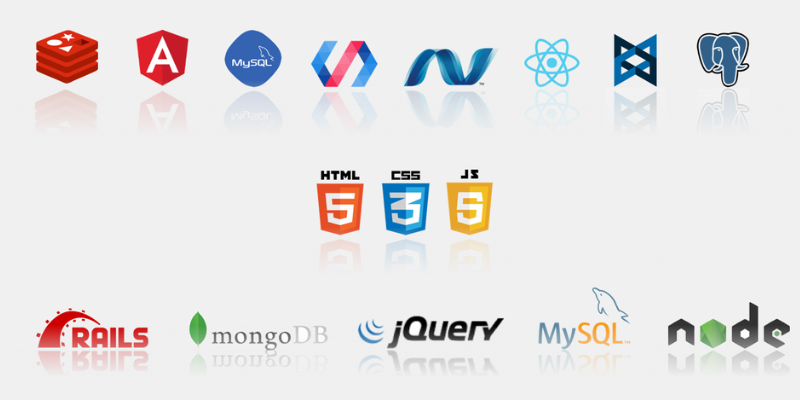
The MERN stack, which stands for Express.js, React, Node.js, and MongoDB, is a powerful technological combination. It is primarily used in modern web development. The developer can ensure that the JavaScript is present on both the client and server sides by building both the front-end and back-end.
We can increase the speed, scalability, and responsiveness of web development by utilizing the MERN stack. The MERN stack is a popular option for companies, offering efficiency in today’s competitive business landscape. FITA Academy provides expert-led training to help you understand these and acquire the skills you need to succeed in full-stack development, including mastering this stack.
What is the MERN Stack?
These are a collection of powerful technologies, aid the full-stack development of the application. The MERN development application is built on top of JavaScript. These database uses React.js for frontend development and MongoDB, Express.js, and Node.js for backend development. You may create a whole application with MERN in just one language, from the front end to the database. These are powerful collection of JavaScript that helps create dynamic web applications. The elements contained in this stack are:
- MongoDB: This is utilized for database purposes.
- Express.js is utilized in the development of backend web frameworks.
- The primary function of React.js is to create an efficient user experience for websites.
- With Node.js, we can create a server-side runtime environment.
Unified Language: JavaScript Across the Stack
JavaScript is the most significant factor contributing to the popularity of the MERN stack. This coding method is used everywhere, from database interactions to server-side applications. JavaScript is a scripting language that was initially developed for web page interactivity. The entire application uses JavaScript over time. When a student wants to upskill their knowledge, they can enrol in the MERN Stack Course in Chennai and learn about this, so they can proceed to the next role in their department.
Without any complications, you will complete the application process in a single language. Because just JavaScript is used, there is less context switching. This will also speed up the development process and reduce the errors due to bugs. Because of its benefits, the team can collaborate more readily, and mentoring junior members is simple because it eliminates the need to switch between languages.
Strong Community and Ecosystem
MERN has a strong and active developer community is closely tied to its technologies, including React, Node.js, MongoDB, and Express.js. This means developers have access to a wealth of open source tools, libraries, and resources that teach you about the technologies and how to address issues during the development process.
With several tutorials, forums, and documentation available, you will be better equipped to interact with other developers. For the sake of frequent updates and readability, leading companies like Meta (formerly Facebook) assist and support React and MongoDB. The development process runs more smoothly thanks to these open-source and plentiful resources, which also foster creativity and enable quick problem solutions in modern online applications.
MERN’s Performance and Scalability
When we look at the performance of MERN, the development of this MERN stack focused on scalability and speed. Node.js’s event-driven, non-blocking architecture enables the execution of multiple requests simultaneously without causing the system to lag. This is ideal for apps that receive a high volume of traffic. MongoDB provides a document schema that enables flexibility and horizontal scaling. This format has a book-like appearance. By learning MERN from the Training Institute in Chennai, students gain the skills to build full-stack web applications using a single language and leverage the powerful features of the MERN stack.
The application will be perfect for the expanding application thanks to this capability. Because it only updates the updated portion of the page without interfering with other parts of the site, React is an effective frontend tool. The application’s performance can be further enhanced by using a virtual DOM. While we use SAP, real-time applications like chat and microservices architectures that require rapid growth and adaptation are well-suited for the MERN.
Advantages of MERN
Let’s examine the MERN benefit, which is its processing speed for prototyping and development. Developers can launch projects in minutes using tools like Express generators and Create React App.
- The adaptable schema of MongoDB enables rapid modifications without intricate migrations, facilitating the launch of an MVP.
- Additionally, MERN facilitates the transfer of data in the same language from the front end to the back end, which lessens the complexity of the data flow.
- The MERN application is more efficient and has fewer bugs because of this consistency.
- Many industries have adopted MERN, which gives you access to a variety of employment options, like an MERN stack developer.
- Platforms like Heroku, Vercel, and AWS provide deployment flexibility, while MongoDB Atlas simplifies cloud database management.
In this blog, we have seen what MERN is and the uses of the MERN stack. This is now favored in contemporary web development. Its JavaScript-based process, which unifies database, frontend, and backend development, is its strongest point. Ultimately, it facilitates the simplification of the overall procedure. As a result, we can increase developer productivity and improve consistency. This MERN stack will lower learning curves for new team members and streamline processes, such as debugging.
Additionally, MERN specializes in speed and flexibility, enabling excellent performance, straightforward scaling, and rapid prototyping. From sophisticated e-commerce platforms to real-time chat apps, we witnessed how the MERN has mastered web development. In real-world applications, we can see the value and efficacy of MERN. MERN stands out as a cutting-edge, effective, and future-proof web technology stack, regardless of your level of experience with full-stack development or your industry experience with scalable apps.
